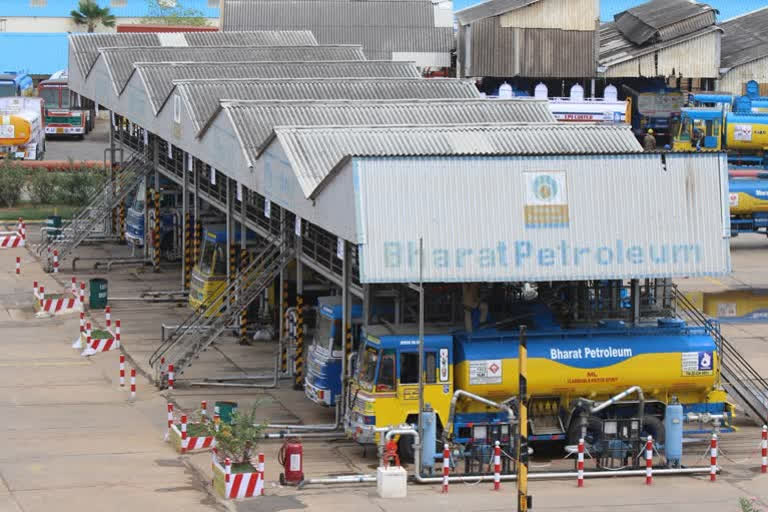Business Desk, ETV Bharat: Disinvestment and Privatisation. The two mantras of the Modi-government at the Centre, which got a recent shot in the arm from the Union Budget 2021-22 presented by Nirmala Sitharaman, has been the recent talk of the town.
The reason behind it is the brouhaha over the proposed disinvestment of the Visakhapatnam Steel Plant in Andhra Pradesh and the stiff resistance put by labour unions as well as a large section of the people of that state.
The reform agenda of limiting the government to four strategic sectors seems nothing but an incremental change to the basic framework proposed by the PV Narasimha Rao-government in 1991.
However, the way the privatisation push was communicated and defended by Prime Minister Narendra Modi and Union Finance Minister Nirmala Sitharaman in Parliament during the Budget session, indicates the new policy could be a watershed moment for India.
In a sense, it boldly sheds the ‘socialist’ tag of the incumbent governments and vouches for the private-sector driven economy.
It’s a Full Circle
While the privatisation drive seems to be bold, the private-sector driven economic model is not novel. In fact, at the time of Independence, the industry was largely in the control of private entrepreneurship and only limited services like the Railways and post offices were manned by the government.
However, things have changed since the 1950s. To begin with, the government had ventured into manufacturing activities by setting up steel plants, power projects, fertiliser making units, etc.
Later, during the Indira-era in 1966, the Government asserted its power and started the nationalisation drive by taking over private firms.
By 1980, when Indira Gandhi came back to power after the Emergency and the brief Janata-rule, the Government was everywhere and public sector enterprises were doing everything from baking and selling bread to making watches and refrigerators, from running hotels to even producing films.
The omnipresent PSEs got a major jolt in 1991 when the Narasimha Rao-government made way for the private sector under its New Economic Policy. Then Union Finance Minister Dr Manmohan Singh was one of the key architects of India's free economic push.
The curious case of BPCL
Bharat Petroleum is a classic example of how the fate of an enterprise keeps changing with every policy shift. The BPCL has its origins in the Burma-Shell, which began operations with import and marketing of kerosene in 1928.
The Burma-Shell was nationalised in 1976 by the Indira Gandhi-government by alleging that it had ‘choked’ the supplies to the Army during the 1971 Bangladesh war against Pakistan.
The same BPCL, which had emerged as a nationalised entity from its erstwhile Burma-Shell avatar, is again set to go back to private hands as the Centre has made it clear that privatisation of the public sector unit will be completed by March 2022.
The hurdles
The privatisation drive seems to be a bumpy ride riddled with procedural delays, opposition from political parties, trade unions and even from the public at large.
In fact, the track record of the government on this front lends credence to this argument as all the four major disinvestment transactions (HPCL sold to ONGC, REC sold to PFC and THDC and NEEPCO sold to NTPC) carried out since 2014 were between public sector enterprises.
Also, the eight privatization transactions (IDBI Bank, BPCL, BEML, Air India, Shipping Corporation of India, Pawan Hans, Container Corporation of India and Neelachal Ispat Nigam Limited) that are currently under the process are ongoing for quite some time but have not made any clinching progress.
Besides procedural hurdles, there is stiff resistance from the Bharatiya Mazdoor Sangh (BMS), the labour wing of the Rashtriya Swayamsevak Sangh.
Reports suggest that BMS has already passed a resolution against the privatisation move and its general secretary Binoy Kumar Sinha wrote a strongly worded letter to the Prime Minister in this regard.
Similarly, bank unions made their disappointment clear against the privatisation of banks and called for a nationwide strike on March 15 and 16.
Talking about political opposition, major parties, including the Congress have been opposing privatisation saying it is meant to help few ‘cronies’.
The government is also facing a backlash from the people at large, which became evident in the Visakhapatnam Steel Plant case in Andhra Pradesh.
Angry protesters argue that the PSU was the result of a two-decade-long struggle during the 1960s and 70s in which 32 protesters got killed in police firing and Andhra's biggest public sector unit going under the hammer would eventually prove to be a body blow to the future of thousands of families who are directly and indirectly attached to the unit.
What we need
Economists argue that blind faith in the private sector will be counterproductive to the economy and the government must upgrade its regulatory framework to cope up with new challenges posed by the market-driven economy.
Pointing out the recent failure of two private sector banks (Yes Bank and Lakshmi Vilas Bank) despite having a regulator like Reserve Bank of India (RBI), proves that there is a gap between the market dynamics and the country’s regulatory ecosystem.
Secondly, the logic that the consumer is going to be benefited in an economy dominated by the private sector, does not hold much water.
The latest statement from the Union Minister for Road Transport and Highways, Nitin Gadkari that big steel and cement firms are operating as a cartel and are behind the recent hike in prices, speaks volumes of the state of India’s private-led industrialisation.
Economists have pointed out that better regulation and marriage of pragmatism and fiscal management could be the way ahead as the present dispensation aims at increased privatisation via the disinvestment route.
Also read: Exclusive: War within may derail PM Modi's privatisation drive


